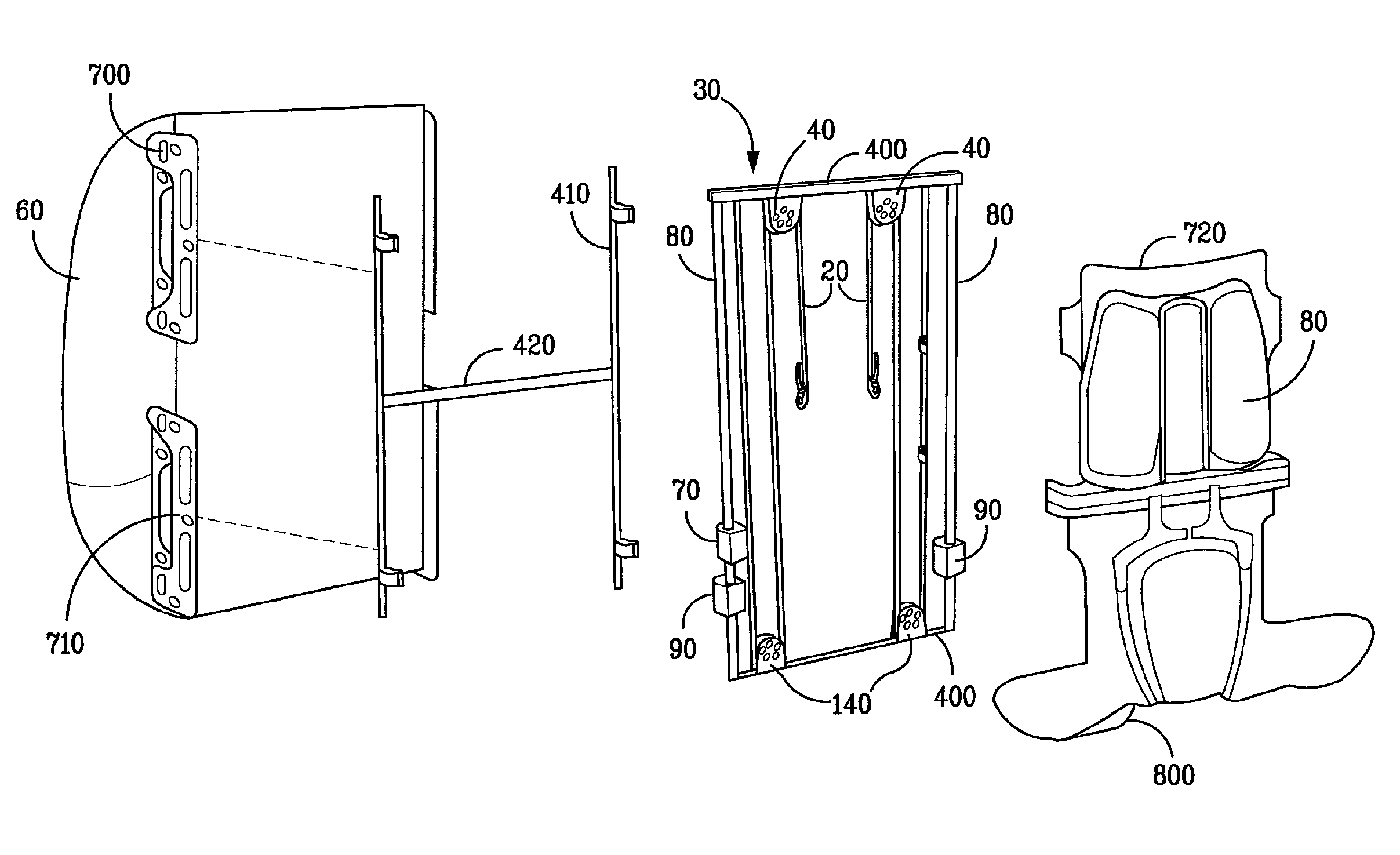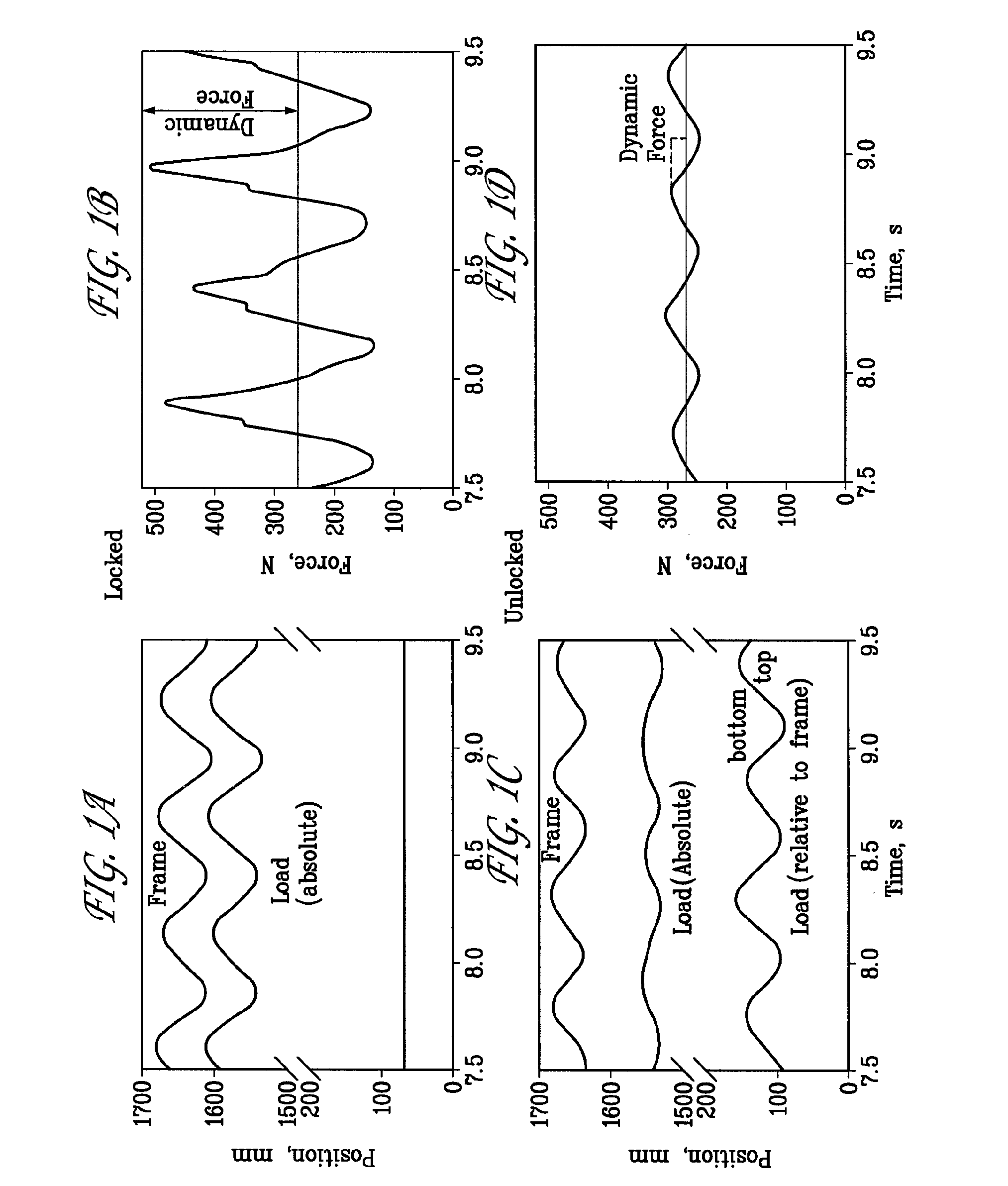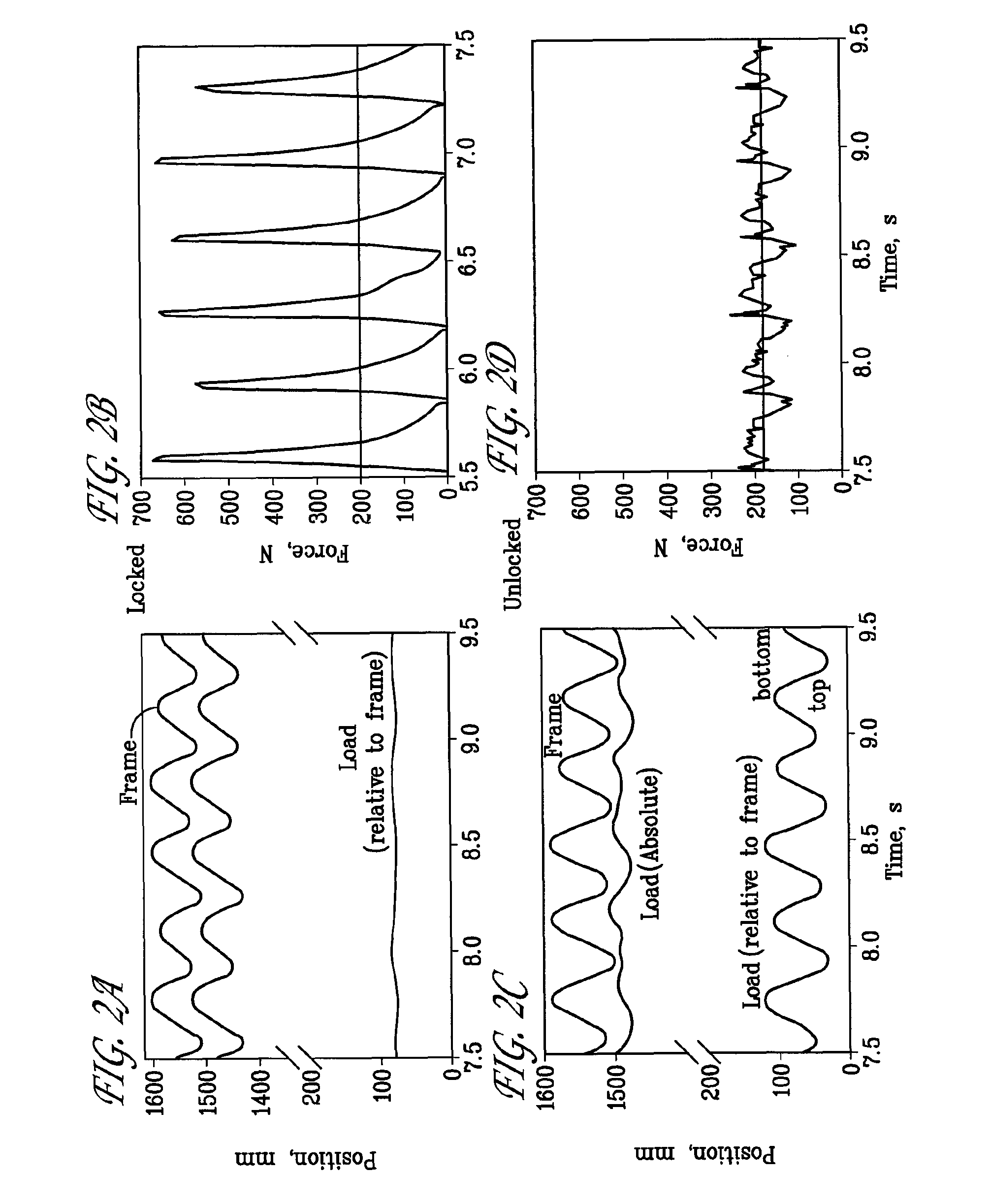Suspended load ergonomic backpack
a backpack and ergonomic technology, applied in the field of ergonomic backpacks, can solve the problems of ineffective small wheels, difficult to move at high speeds, and small backpacks, etc., and achieve the effects of reducing the metabolic rate of carrying, facilitating movement, and facilitating movemen
- Summary
- Abstract
- Description
- Claims
- Application Information
AI Technical Summary
Benefits of technology
Problems solved by technology
Method used
Image
Examples
embodiment
Running Backpack Embodiment
[0049]The principles illustrated above can be applied to any type of load carrying device in use for profession or sports. For example, it has become common for runners or long distance trekkers to run with backpacks carrying water, food, and potentially clothing. Running backpacks are generally made to attaching tightly to the body, hence the load must be accelerated on every step. However, if the load were suspended in accordance with the invention so that it stayed at nearly a constant vertical height and would not have to be accelerated on every step, then a significant reduction in forces would be achieved. To reduce such forces, the backpack of the embodiments of FIGS. 3-6 or 7 may be used with the addition of a frictional device to take out a bit more energy than is dissipated in the compliant coupling. For example, the embodiment of FIG. 8 shows the addition of a rack 300 and pinion 310 that drive a fan 320. Alternatively, as described in U.S. Pat....
PUM
 Login to View More
Login to View More Abstract
Description
Claims
Application Information
 Login to View More
Login to View More - R&D
- Intellectual Property
- Life Sciences
- Materials
- Tech Scout
- Unparalleled Data Quality
- Higher Quality Content
- 60% Fewer Hallucinations
Browse by: Latest US Patents, China's latest patents, Technical Efficacy Thesaurus, Application Domain, Technology Topic, Popular Technical Reports.
© 2025 PatSnap. All rights reserved.Legal|Privacy policy|Modern Slavery Act Transparency Statement|Sitemap|About US| Contact US: help@patsnap.com



